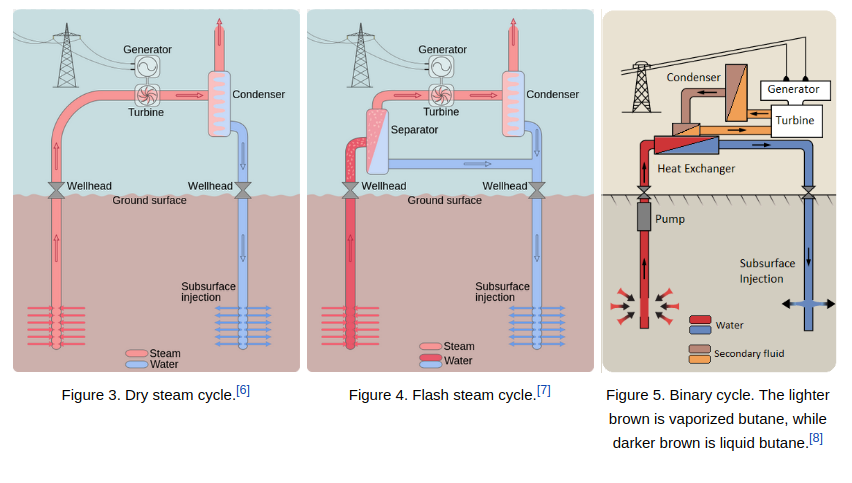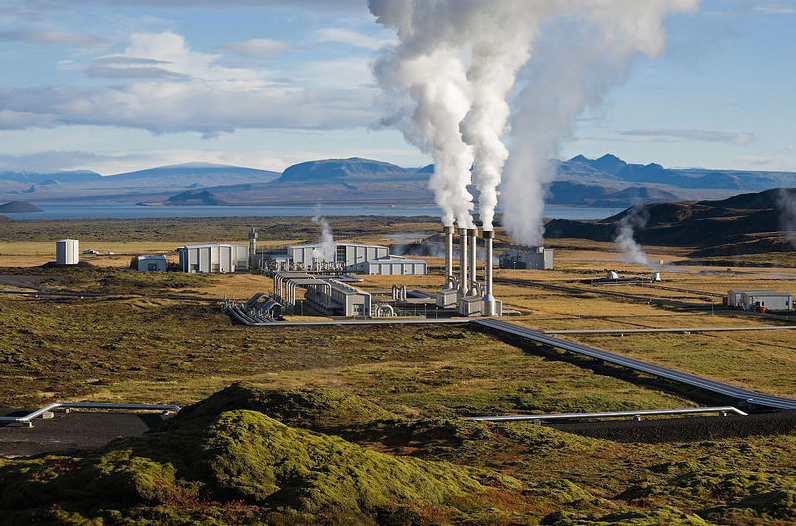Geothermal power stations generate electricity by harnessing the Earth’s natural heat from the planet’s depths. This renewable energy source is derived from the heat produced by the decay of radioactive isotopes in the Earth’s core and the heat absorbed from the sun on its surface. Geothermal power is considered a sustainable and environmentally friendly option for electricity generation because it produces minimal greenhouse gas emissions and has a low environmental impact.
This Geothermal Power Plant seminar report covers:

Geothermal Energy Plant Abstract
Geothermal Power Stations in a nutshell
Geothermal power stations are advanced electricity generation facilities that harness the Earth’s internal heat from geothermal reservoirs located close to the surface in geologically active regions. The process involves drilling wells to access the hot rocks and fluids, and the geothermal energy is then used to produce steam, which drives turbines connected to generators, converting the thermal energy into electrical power. This environmentally sustainable and renewable energy source offers a consistent and reliable baseload power supply, with minimal greenhouse gas emissions, making it an essential component of a greener and more sustainable energy portfolio.
Geothermal Energy in the world – an overview
Geothermal energy is being utilized in various parts of the world and continues to gain momentum as a renewable energy source. Geothermal energy harnesses the heat from the Earth’s core to generate electricity or provide direct heating and cooling for various applications. Here are some key points about geothermal energy in the world:
- Geothermal Power Generation: Several countries have been actively generating electricity from geothermal sources. The leading countries in terms of geothermal power capacity include the United States, the Philippines, Indonesia, Mexico, and Italy. These countries have vast geothermal resources and have invested in developing geothermal power plants.
- Geothermal Heating: Beyond electricity generation, geothermal energy is used directly in various industries and residential buildings. Countries like Iceland heavily rely on geothermal heating to meet their heating demands.
- Expansion of Geothermal: Many nations are exploring and developing their geothermal potential. This includes countries in regions with significant geothermal resources, such as East Africa’s Rift Valley and various parts of Southeast Asia.
- Advantages of Geothermal Energy: Geothermal energy is a renewable and sustainable resource with minimal greenhouse gas emissions. It provides a stable and continuous power supply, as it is not dependent on weather conditions like solar and wind energy.
- Challenges: While geothermal energy has significant potential, its deployment is often limited by factors such as the location of suitable geothermal reservoirs, high upfront development costs, and technical challenges associated with drilling and resource assessment.
Types of Geothermal Power Plants
There are three main types of geothermal power stations:
- Dry Steam Power Plants: These power plants use geothermal steam directly to rotate turbines and generate electricity. High-pressure, high-temperature steam is extracted from underground reservoirs and directed to the turbines, which drive the generators to produce electricity.
- Flash Steam Power Plants: Flash steam power plants are the most common type of geothermal power station. They work by tapping into geothermal reservoirs containing high-pressure hot water. As this water is brought to the surface, the sudden drop in pressure causes some of it to flash into steam. The steam is then used to drive turbines and produce electricity.
- Binary Cycle Power Plants: Binary cycle power plants are employed when the temperature of the geothermal fluid is relatively low. In this setup, the hot geothermal water or steam is passed through a heat exchanger, transferring its thermal energy to a secondary working fluid with a lower boiling point, such as isobutane or isopentane. The secondary fluid vaporizes and drives a turbine connected to a generator, producing electricity.
Advantages of Geothermal Power Stations:
- Renewable and sustainable energy source.
- Low greenhouse gas emissions and minimal air pollution.
- Relatively small land footprint compared to other power plants.
- Reliable and stable source of electricity, not dependent on weather conditions like solar or wind power.
- Long lifespan of geothermal reservoirs with proper management.
Challenges of Geothermal Power Stations:
- Site-specific: Geothermal resources are not evenly distributed globally, limiting the potential for widespread adoption.
- High initial investment: Developing geothermal power plants can be costly, especially in areas with less-developed geothermal resources.
- Environmental impact: Although geothermal power has lower emissions than fossil fuels, it can still have some environmental impact, such as the release of trace gases and the potential for induced seismicity.
- Resource depletion: Over-extraction of geothermal fluids can lead to decreased reservoir pressure and decreased energy production over time if not appropriately managed.

Despite the challenges, geothermal power remains a promising renewable energy source essential in transitioning to a more sustainable and carbon-neutral energy system. As technology and research progress, it is possible that geothermal power’s potential can be further harnessed and expanded in the future.
References and image credits:
Collegelib.com prepared and published this curated article for the preparation of an engineering topic. Before shortlisting your topic, you should do your research in addition to this information. Please include Reference: Collegelib.com and link back to Collegelib in your work.